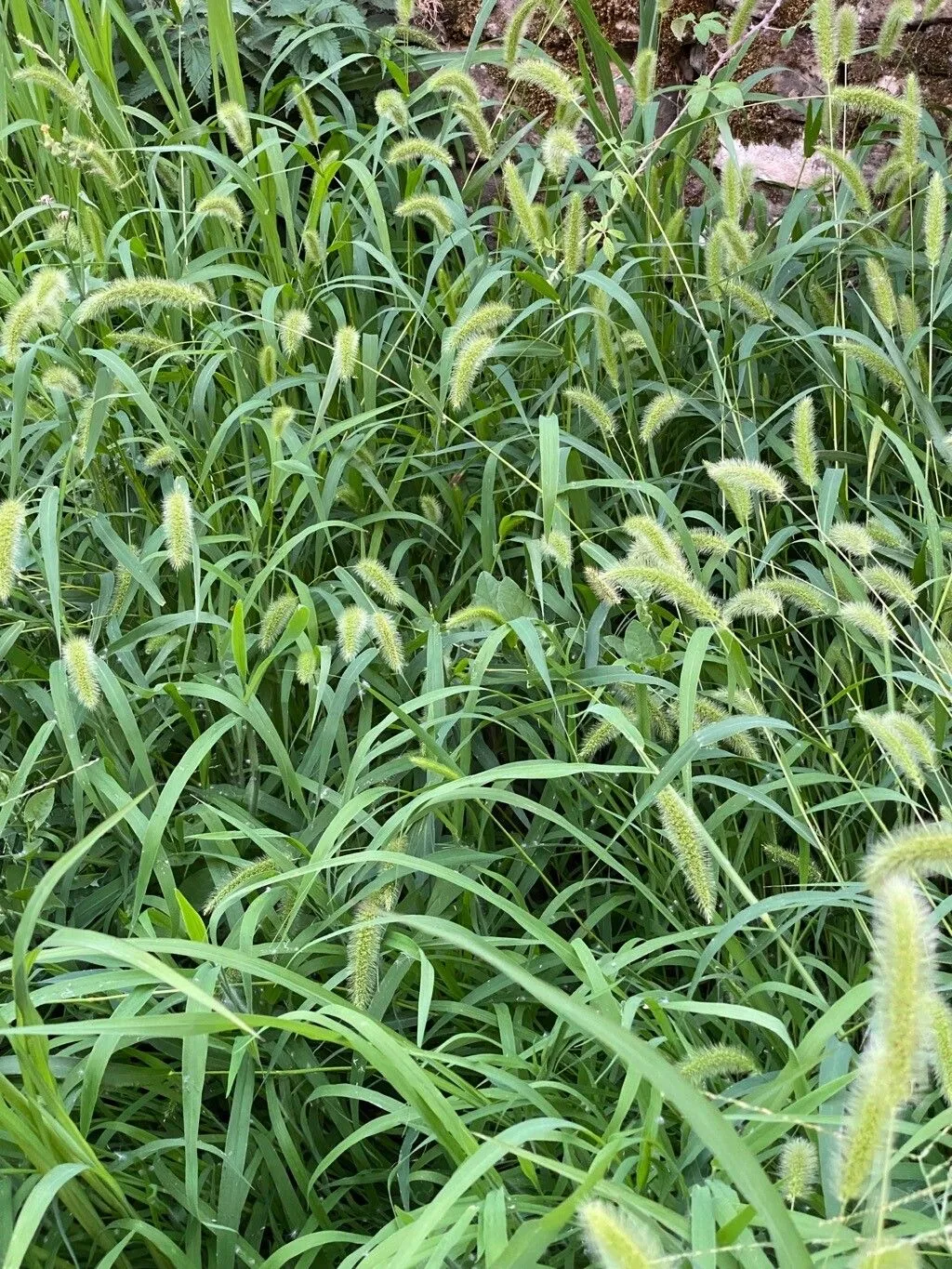
Author: R.A.W.Herrm.
Bibliography: Beitr. Biol. Pflanzen 10: 51 (1910)
Year: 1910
Status: accepted
Rank: species
Genus: Setaria
Vegetable: False
Observations: W. Siberia, Russian Far East to China, Temp. E. Asia
Chinese foxtail, known scientifically as Setaria faberi, is a notable species of grass from the Poaceae family, first described by R.A.W. Herrm. in 1910 in “Beiträge zur Biologie der Pflanzen.” This resilient plant is predominantly found across vast regions, including Western Siberia, the Russian Far East, extending to China, and throughout temperate Eastern Asia.
The Chinese foxtail thrives in a variety of environments, which underscores its adaptability and vigour. Favoring temperate climates, it commonly occupies agricultural fields, disturbed sites, and various open areas, where it can frequently be seen growing in dense clusters. These zones provide the optimal conditions for its growth, primarily due to the well-drained soils and open sunlight they offer.
Morphologically, the plant presents a characteristic bristly appearance, which gives it the common name “foxtail.” The seed heads or inflorescences resemble the tail of a fox, made up of a central stem with numerous long, hair-like bracts. This unique structure aids in seed dispersal, as the bracts can easily attach to animals or be carried by wind, ensuring the spread of the species across wide areas.
Ecologically, Setaria faberi plays a significant role in its native habitats. It serves as a food source for various herbivores and a shelter for many small animals and insects. However, due to its robust nature and aggressive growth, it can also be considered a weed in some agricultural settings, posing competition to crops and potentially impeding agricultural productivity.
Efforts to manage Chinese foxtail involve a combination of mechanical, chemical, and perhaps biological controls to reduce its spread and impact, particularly in farming areas where it may become problematic. Understanding its growth patterns, ecological preferences, and effective management strategies is crucial for mitigating its effects when necessary.
Engaging with this plant from a botanical perspective reveals much about its life cycle and how it interacts within its ecosystem. For researchers and ecologists, Setaria faberi offers an interesting case study in the balance between native flora thriving in their environments and the challenges they can pose within human-altered landscapes.
Eng: chinese foxtail, giant foxtail, japanese bristlegrass, nodding bristle grass, nodding bristle-grass, giant bristlegrass, nodding foxtail
Deu: faber-borstenhirse, fabers borstenhirse
Dan: faber-skærmaks, fabers skærmaks
Lit: faberio šerytė
Ita: setaria di faber
Fra: sétaire, sétaire géante
Ces: bér ohnutý
Nld: chinese naaldaar
Swe: kinesisk kavelhirs
Cym: cibogwellt pendrwm
En: Chinese foxtail, Japanese bristlegrass, Nodding Bristle-grass, Giant foxtail, Nodding bristle grass, Giant bristlegrass, Nodding foxtail
Cs: Bér ohnutý
Da: Faber-skærmaks, Fabers skærmaks
Nl: Chinese naaldaar
Fr: Sétaire, Sétaire géante
De: Faber-Borstenhirse, Fabers Borstenhirse
It: Setaria di Faber
Lt: Faberio šerytė
Sv: Kinesisk kavelhirs
Cy: Cibogwellt Pendrwm
Taken Feb 22, 2021 by Syr Asd (cc-by-sa)
Taken Aug 15, 2022 by F. Manzano (cc-by-sa)
Taken Jun 17, 2021 by fulai fulai (cc-by-sa)
Taken Sep 7, 2021 by 道草 (cc-by-sa)
Taken Aug 3, 2022 by Markus Ertmer (cc-by-sa)
Taken Oct 4, 2022 by 道草 (cc-by-sa)
Taken Oct 4, 2022 by 道草 (cc-by-sa)
Taken Sep 7, 2021 by 道草 (cc-by-sa)
Taken Sep 7, 2021 by 道草 (cc-by-sa)
Taken Aug 15, 2022 by F. Manzano (cc-by-sa)
Taken Jun 17, 2021 by fulai fulai (cc-by-sa)
Growth habit: Graminoid
Family: Myrtaceae Author: (F.Muell.) K.D.Hill & L.A.S.Johnson Bibliography: Telopea 6: 402 (1995) Year: 1995 Status:…
Family: Rubiaceae Author: Pierre ex A.Froehner Bibliography: Notizbl. Bot. Gart. Berlin-Dahlem 1: 237 (1897) Year:…
Family: Sapindaceae Author: Koidz. Bibliography: J. Coll. Sci. Imp. Univ. Tokyo 32(1): 38 (1911) Year:…
Family: Asteraceae Author: A.Gray Bibliography: Pacif. Railr. Rep.: 107 (1857) Year: 1857 Status: accepted Rank:…
Family: Fabaceae Author: Medik. Bibliography: Vorles. Churpfälz. Phys.-Ökon. Ges. 2: 398 (1787) Year: 1787 Status:…
Family: Aspleniaceae Author: (Cav.) Alston Bibliography: Bull. Misc. Inform. Kew 1932: 309 (1932) Year: 1932…